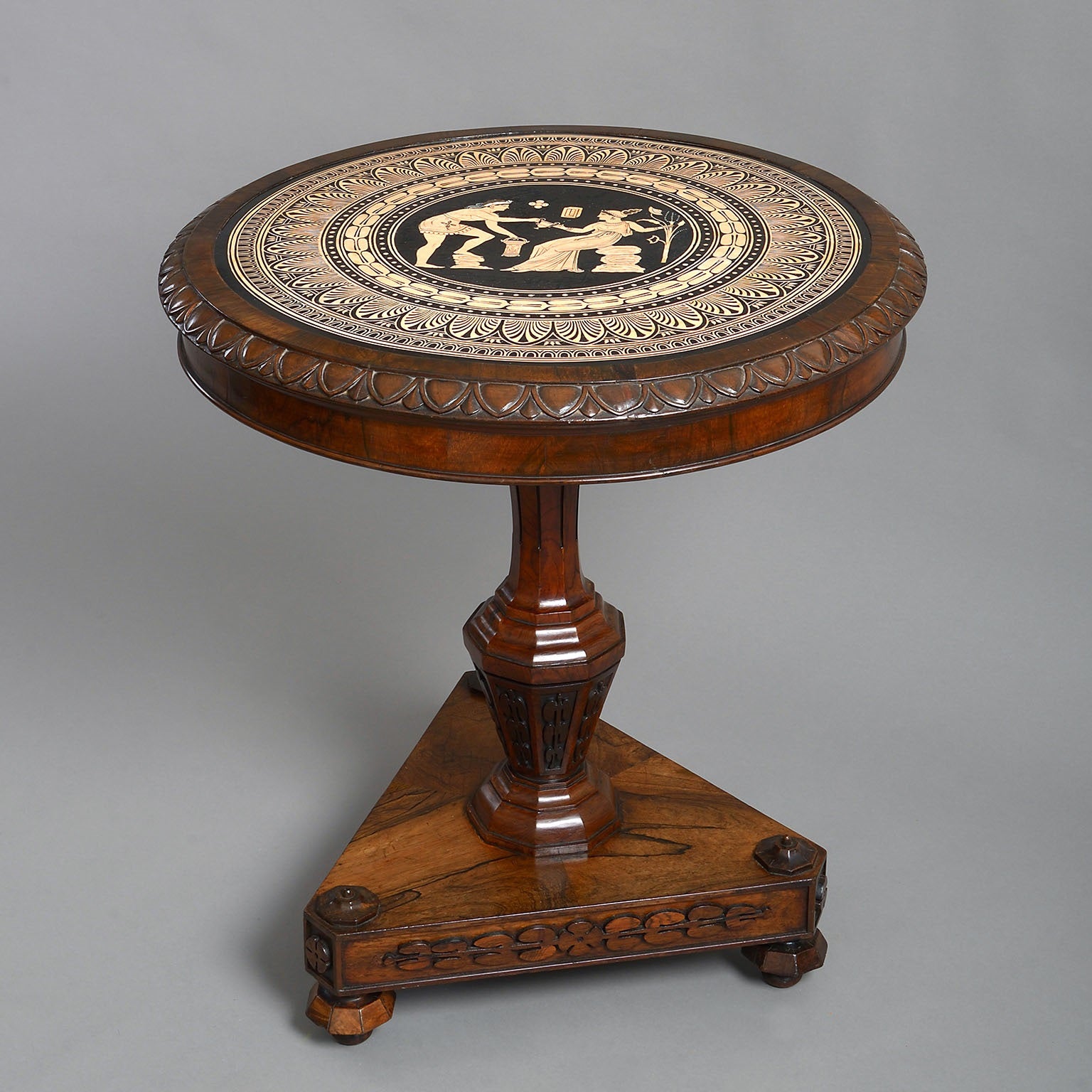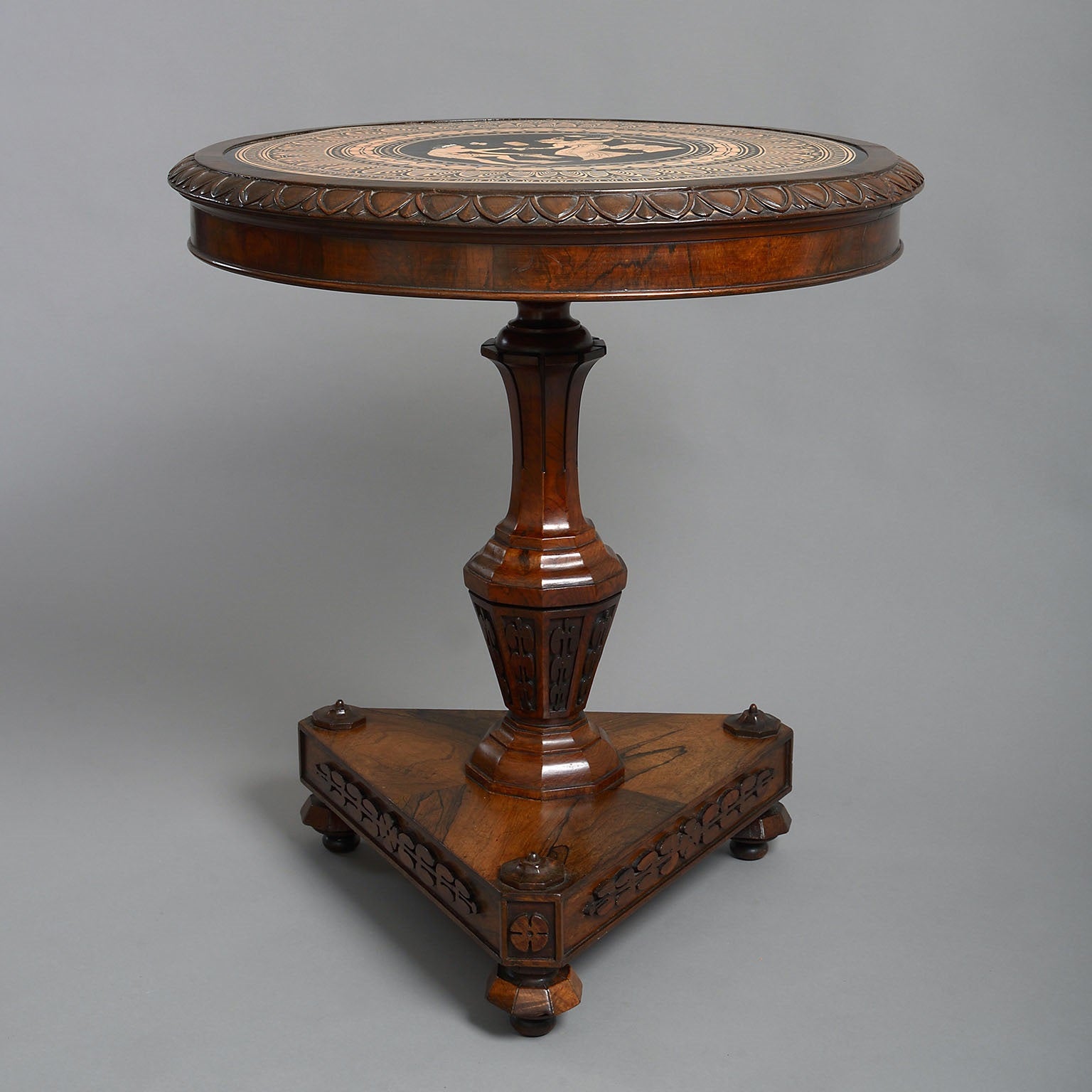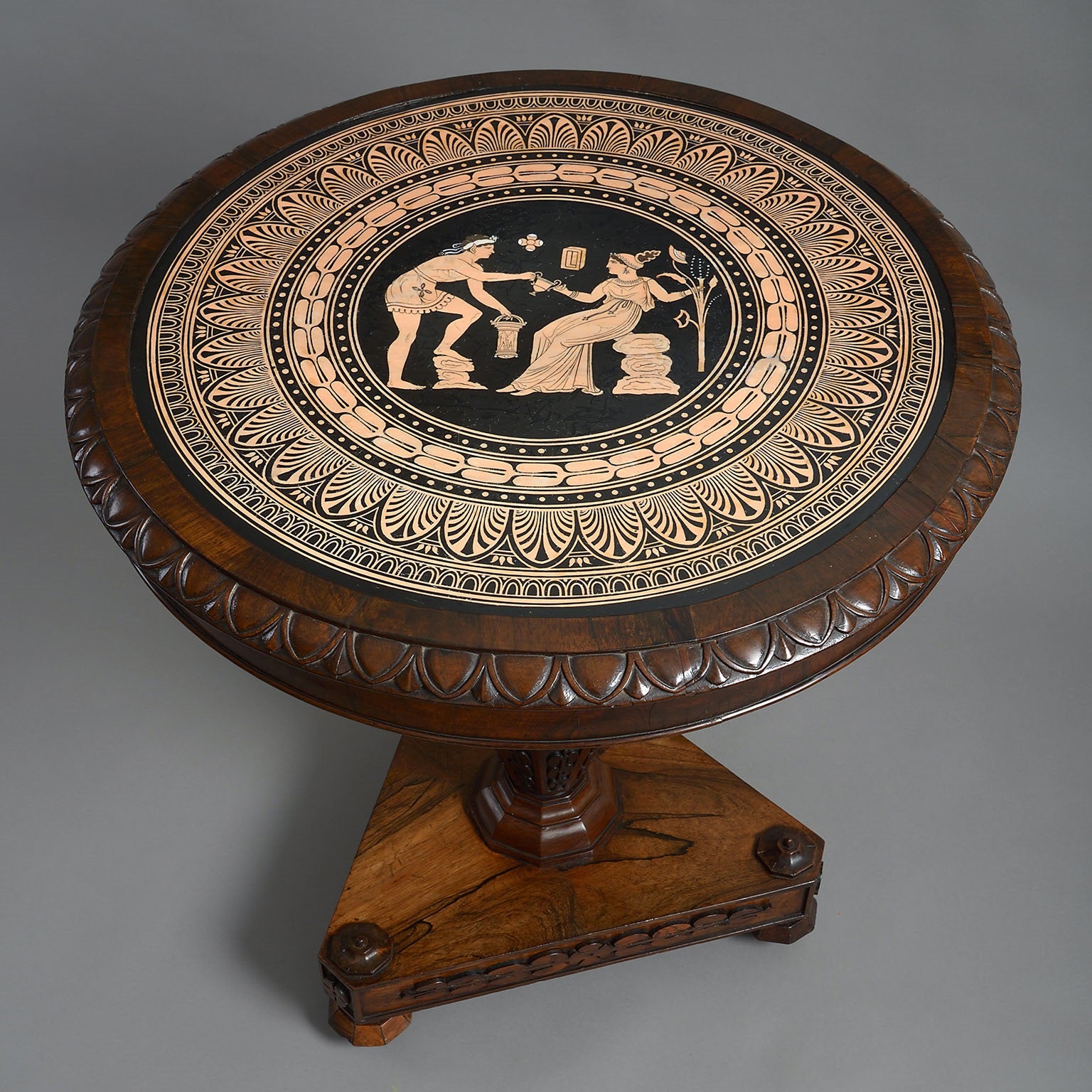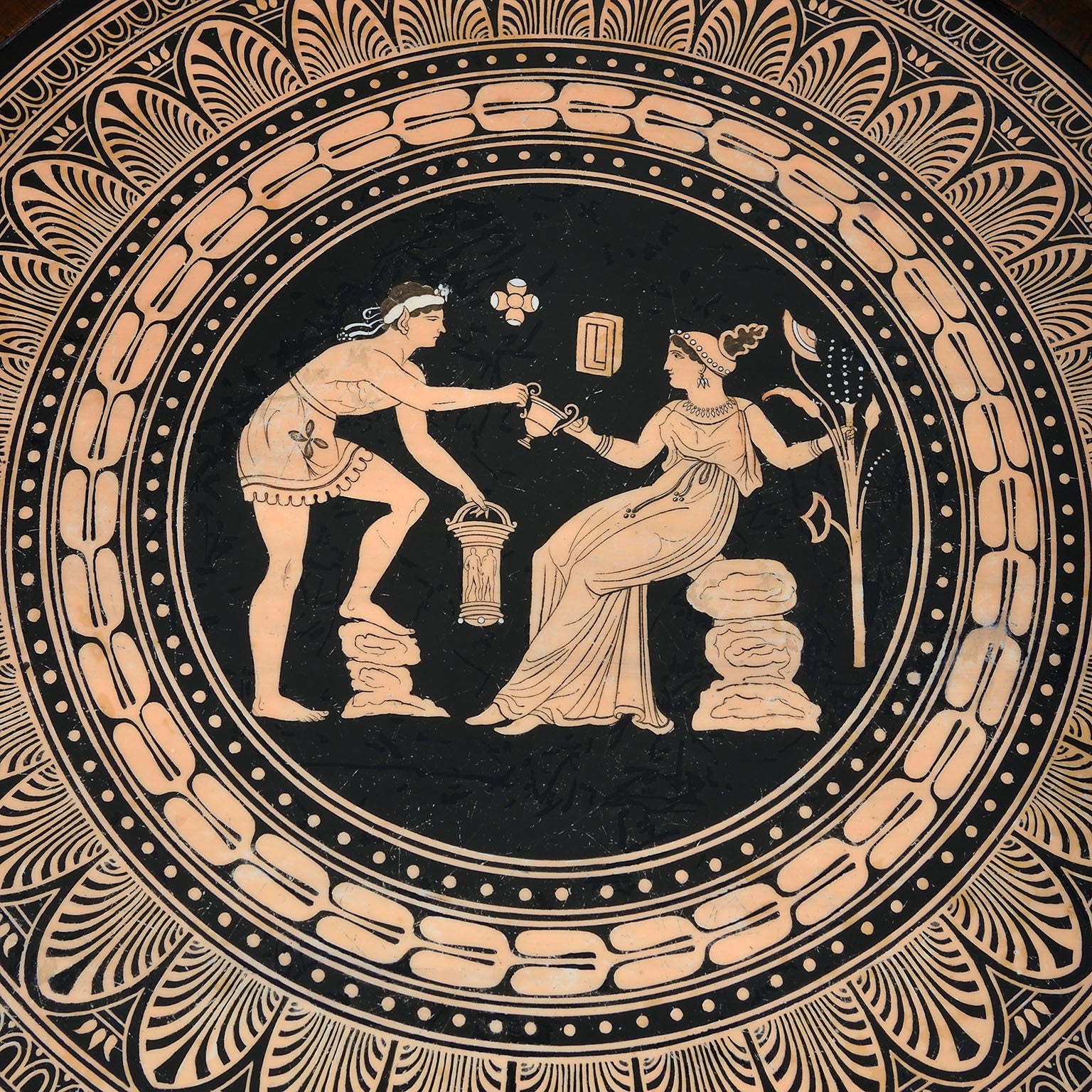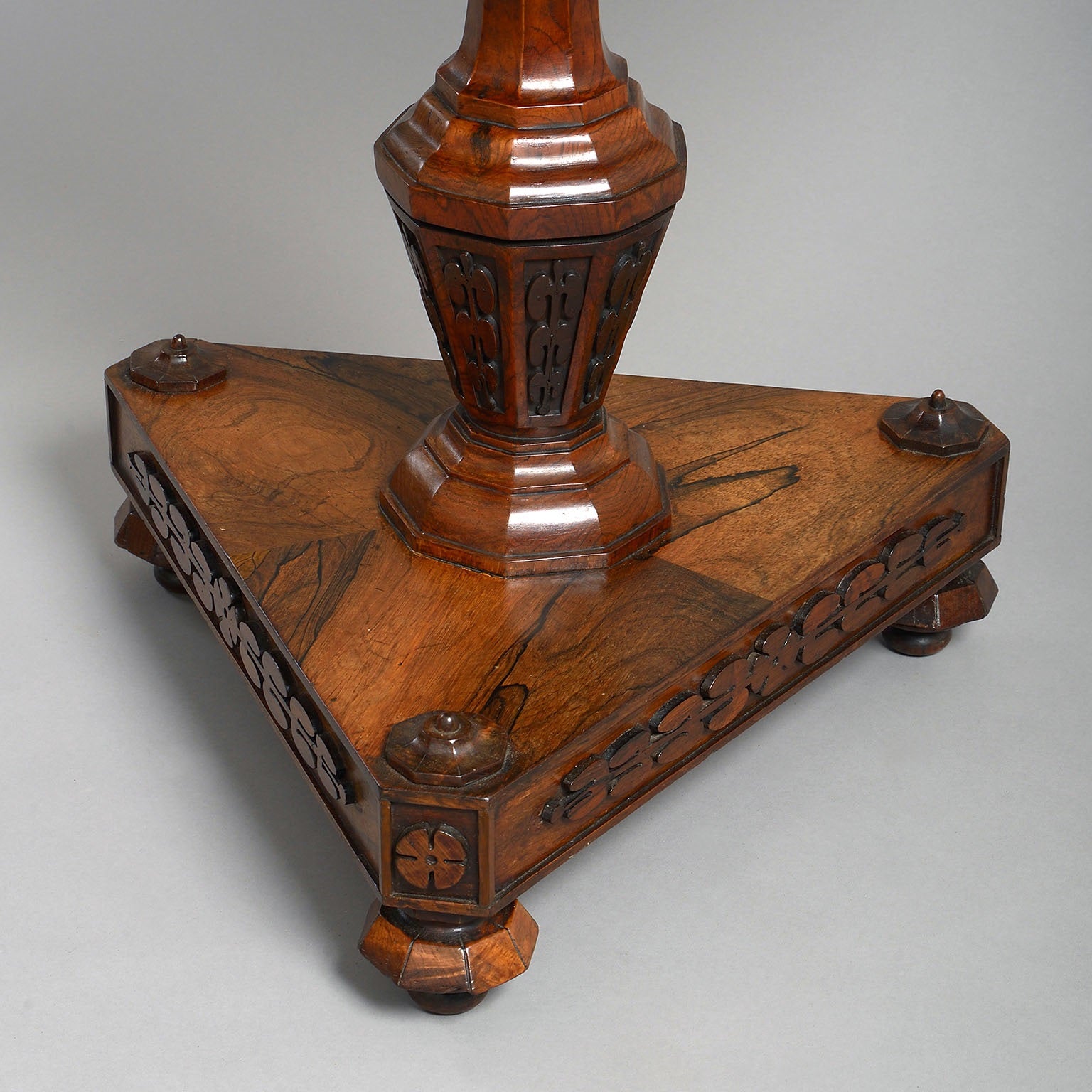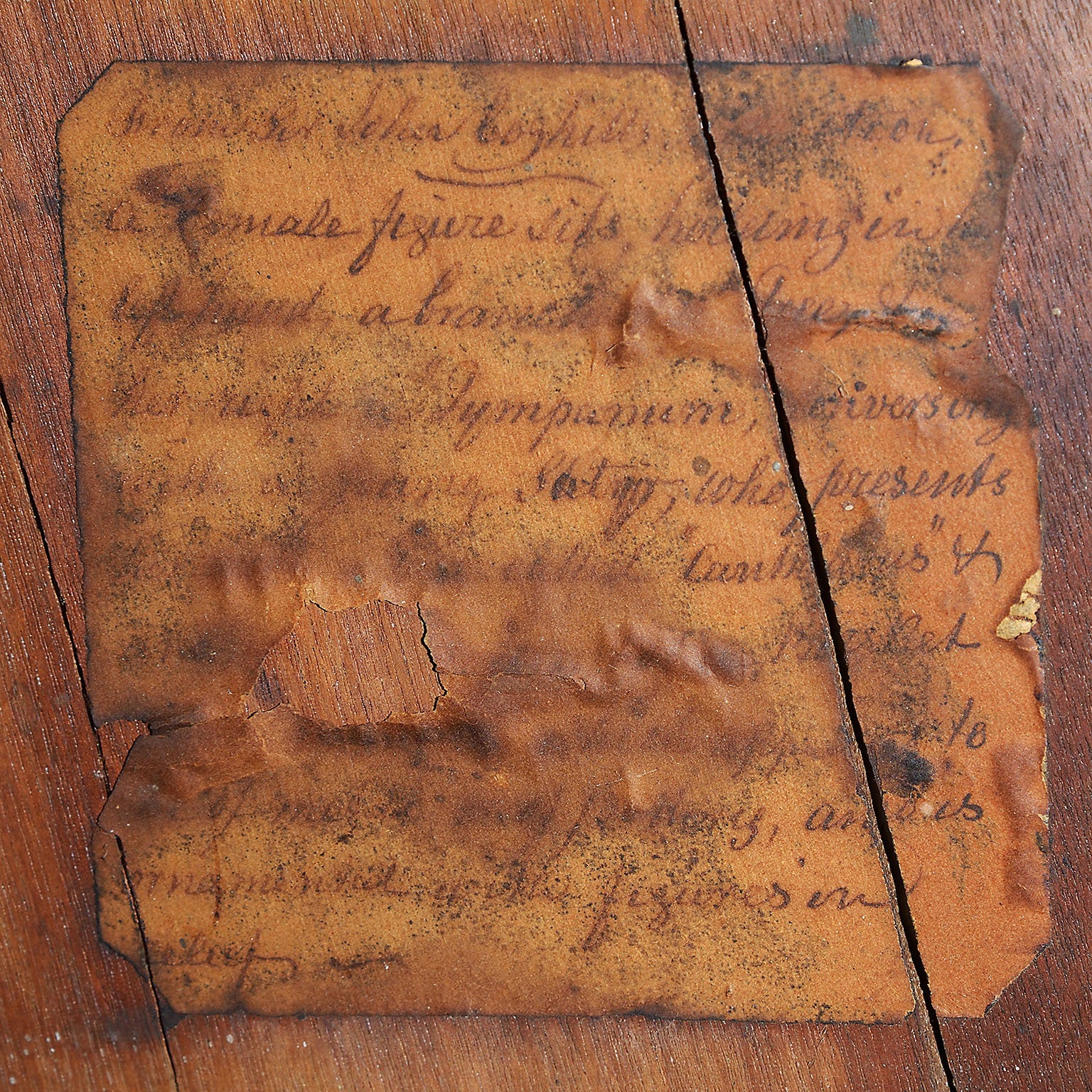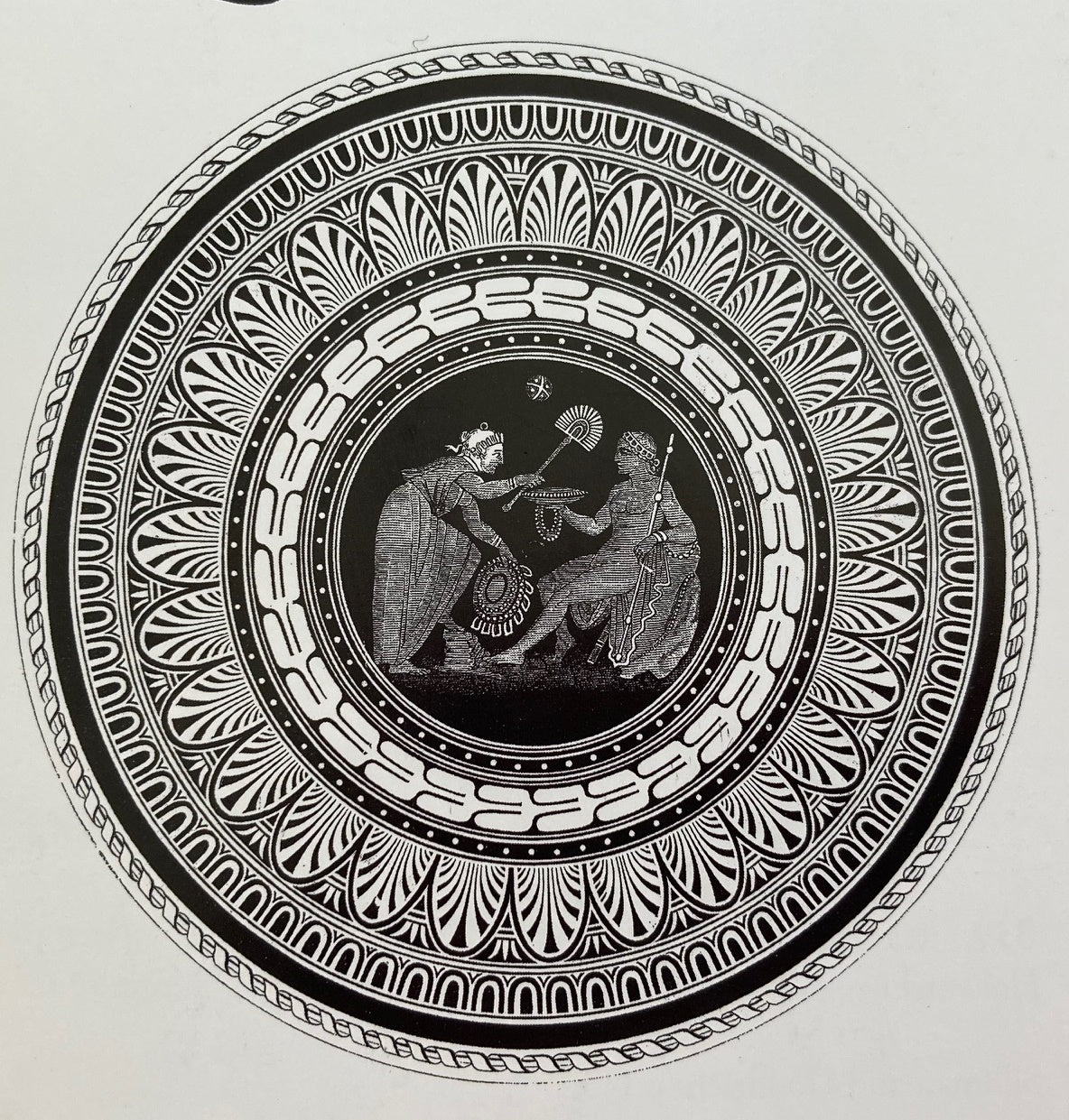The Coghill/Englefield Centre Table with a Neo-Classical Ceramic Top by W.T. Copeland
THE COGHILL/ENGLEFIELD CENTRE TABLE WITH A NEO-CLASSICAL CERAMIC TOP BY W. T. COPELAND
Staffordshire England Circa 1850
Bearing a 19th Century hand written label stating that the table top design is taken from an ancient Greek vase in Sir John Coghill’s collection and describing the scene.
The scene appears to represent Aphrodite, seated on rocks in a garden and accepting wine from a lover, possibly Adonis portrayed as a satyr. The inspiration for this ceramic tour de force comes from the Apulian Red Figure vessels of the 5th and 4th Centuries BC.
In 1820 Rodwell and Martin of Bond Street published a catalogue of Vases from the collection of Sir Henry Englefield Bart, drawn and engraved by Henry Moses. Plate X1 and X11 show the front of a vase and a development of the painting which ornaments it. The description is thus:
‘A female figure sits holding in her left hand a branch of a tree, and in her right hand a tympanum, conversing with a young satyr, who presents her with a vase called a cantharus, and another in the form of a basket called a talapos, which appears to be of metal or pottery and is ornamented with figures in relief. Formerly belonging to George Chinnery.’
Apart from a few minor changes to the objects, the illustration X11 as above is identical to the scene on the present table top.
The genius who designed the base not only created a vase central column to reflect the Coghill collection of ancient vases, but both with the palmette top edge moulding, the carved panel friezes on both the column and the triform base panels, mirrored the decoration on the ceramic top. Given the complexity and originality of the base it can only have been conceived by one of the leading architect designers of the first half of the 19thCentury.
In the New York exhibition of 1853 W.T.Copeland displayed a table top in the Etruscan manner with an identical border to the top of the existing table.
Due to the difficulty in creating ceramic tops of this large size together with their vulnerability few if any have survived.
Measurements: Height 27” (68.5cms) Diameter 25.5” (65cms)
Sir John Coghill (1766-1817)
Sir John was the second baronet and inherited the title and estates on the death of his father in 1790. The family name was originally Cramer with strong Irish political roots. Sir John changed his name to Coghill by Royal licence in 1807. The family residence was Coghill Hall, Knaresborough, Yorkshire. Sir John never married. He latterly sold the family estates and retired abroad where he amassed an important collection of ancient Greek vases to rival that of Sir William Hamilton, British Envoy in Naples and renowned collector. Sir John acquired most of his collection from Giovanni Gherardo de Rossi and the Neopolitan collector M. Bonnet. He died in Caen, Normandy but his collections were brought back to England and sold in London by Christies in June 1819. Most of the vases were purchased at the sale by Henry Englefield, Thomas Hope and Richard Payne Knight and now reside in many international museums.
Sir Henry Charles Englefield 7th Bart (1753-1822)
Antiquary and scientific writer, Sir Henry had a broad range of interests from astrology to geology to Classical Antiquities. He was president of the Society of Antiquaries 1811- 1817, secretary of the Dilettanti Society and fellow of the Royal Society.
Litt. Great Exhibitions 1851-1900 by Jonathan Meyer Publishers Antique Collectors Club 2006 page 81 Illustration B33. James Millingen Published by De Romanis 1817 Peintures Antiques de Vases Grecs de la Collection de Sir John Coghill Bart.
A Catalogue of the Vases from the Collection of Sir Henry Englefield Bart, illustrated by Henry Moses and published in 1820 by Rodwell and Martin of Bond Street London.
Our thanks to the Crown Office Scribe for analysing the handwriting on the label preserved on the underside of the table.
Collections: Antiques, Furniture, Latest Pieces
Share:
